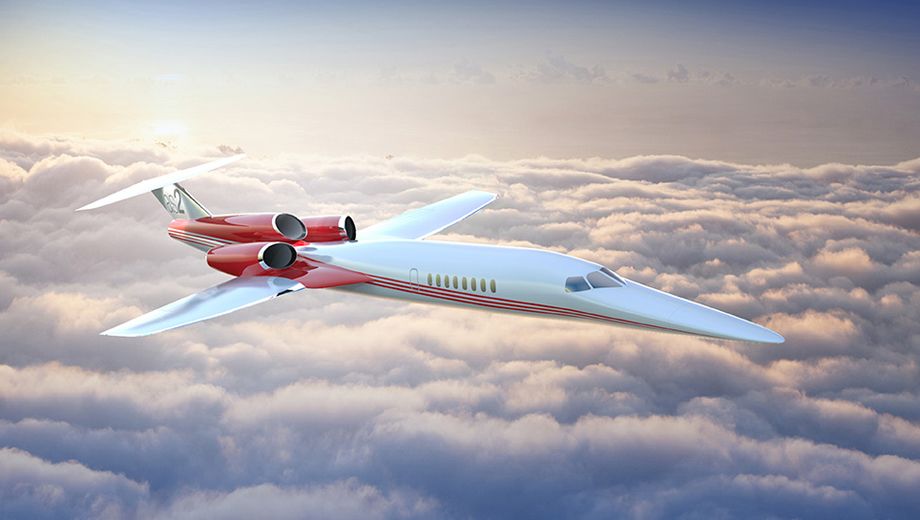Aerion's AS2 supersonic private business jet gets a boost

Aerion's plans to launch a supersonic business jet could pick up speed following a joint venture with Lockheed Martin to build the a private jet that flies faster than the speed of sound.
It’s the first time Aerion, backed by Texas billionaire Robert Bass, has sought outside financing for its AS2 supersonic jet, a project the company has been working on since 2003.
“Initially we’re going to be looking at somewhere around US$150 million to US$200 million that would get us through to the preliminary design phase, which would be about two years out,” said Brian Barents, executive chairman of Aerion.
The financing will be a big step forward for the US$4 billion project to produce the world’s first supersonic business jet. Aerion has already enlisted General Electric to design an engine exclusively for the plane.
The team aims to make the jet’s first flight in 2023, Barents said. Non-military aircraft haven’t flown faster than Mach I – the speed of sound – since the Concorde stopped service in 2003.
Aerion will begin taking orders from customers now and their deposits will contribute to financing development, Barents said. Aerion would consider taking on equity partners as well, he said. The company expects there’s demand for 300 aircraft over a decade.
The company reached out to Lockheed about a year ago and engineers from the world’s largest defense contractor then visited Aerion’s Reno, Nevada, headquarters to review the supersonic jet’s design.
“We are excited to work with Aerion on their development of the next-generation, efficient supersonic jet that will potentially serve as a platform for pioneering future supersonic aircraft,” said Orlando Carvalho, executive vice president of Lockheed Martin Aeronautics.
Aerion first worked with Airbus, starting in 2014, to review designs for the wing and airframe, as well as help develop systems layout and flight controls, Barents said.
However, Airbus may have other priorities now. The company reached an agreement with Canada’s Bombardier in October to take over development and marketing of its small commercial airliner known as the C Series.
The European manufacturer is also grappling with potentially large penalties resulting from a corruption probe, shrinking orders for its A380 jumbo jet and budget overruns on the A400M military transport plane, as well as a management shakeup.
Aside from engine development, a priority for Aerion’s project has always been “teaming with an established, recognized, reputable airframe manufacturer that could bring us to market,” Barents said.
Lockheed, which manufactures fighter jets including the F-35 Lightning II and the F-16 Fighting Falcon, isn’t a complete stranger to the private-plane market. The Bethesda, Maryland-based company built the first dedicated business aircraft, the JetStar, which entered into service in 1961 and had its final delivery in 1978.
The contractor also has helped the National Aeronautics and Space Administration with a program to mitigate the boom that aircraft produce when flying faster than the speed of sound.
“Following our initial review of Aerion’s aerodynamic technology, our conclusion is that the Aerion AS2 concept warrants the further investment of our time and resources,” Lockheed’s Carvalho said. Decisions on whether to invest directly in the project will hinge on work Lockheed does to help prep the plane for manufacturing and certification, Carvalho said during a Friday news conference.
“We do believe that new materials, new technologies are making civil supersonic flight a realistic near-term possibility,” he said.
GE expects its engine design will allow the AS2 to fly 4,200 nautical miles at a velocity 1.4 times the speed of sound, said Brad Mottier, GE’s chief of business and general aviation & integrated systems. It will adapt parts and technology from existing GE civil and military engines, he said.
“We’ve nearly concluded this initial design exercise and have arrived at a configuration well suited for the AS2’s needs,” Mottier said. “This has been no easy task, otherwise someone would have done a civil supersonic business jet before.”
With Lockheed on the team and GE designing the engine, private-aircraft operator Flexjet is more confident than ever that the plane will become a reality, said Chief executive officer Michael Silvestro. Flexjet was the launch customer for the AS2 two years ago with an order of 20 supersonic jets.
“As you see the progress they’ve made and point to their collaborators – with Lockheed and GE – that does speak volumes,” said Silvestro, who attended Friday’s announcement in Washington. “It’s very impressive.”








